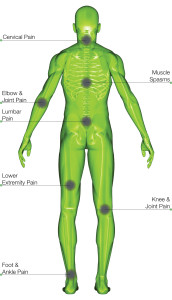 Athletic trainers and medical professionals specializing in sports medicine are bombarded with requests to try the latest rehabilitation and physical therapy devices.
Athletic trainers and medical professionals specializing in sports medicine are bombarded with requests to try the latest rehabilitation and physical therapy devices.
While it is important to stay ahead of new technologies and evaluate legitimate interventions, you don’t want to waste time or money on modalities with more marketing behind them than solid clinical evidence.
Class III lasers have been used in Major League Baseball for more than a decade and have proven effective. However, in 2008, the Toronto Blue Jays began use of a class IV laser, and were impressed with the results.
In addition to expediting athletes’ recovery times after injury or surgery, the device also serves as an injury prevention tool. For example, by treating a starting pitcher’s shoulder before every game, they warm up the joint, help prevent stiffness and optimize on-field performance.
The basic science behind laser therapy is compelling. Studies have shown that impaired cells have a stronger response to laser light than healthy cells. The laser works by impacting cellular function, using light-emitting diodes to beam infrared rays into the cells of damaged tissue.
The light enters as photons, which are then accepted by photoreceptors in the cells. The light stimulates adenosine triphosphate, or ATP, an adenosine-derived nucleotide, which supplies large amounts of energy to cells for various biochemical processes, including muscle contraction.
In essence, the light energizes and rebalances the cell. Damaged cells absorb and become energized by photonic energy. This function has been documented with more than 2,000 clinical studies over the last 30 years. Stimulated cells increase ATP production and dramatically reduce inflammation, pain and swelling. Therefore, this modality may be considered a healing process, as it corrects compromised cellular function and allows the body to heal.
The following conditions are among many, which can respond favorably to class IV laser therapy if you comply with general treatment parameters. Age and injury severity determine individual protocols.
- Tendinitis (shoulder). We use laser therapy to help warm up athletes prior to throwing. Players notice less stiffness when they start throwing and decreased soreness and fatigue after throwing, compared with other modalities.
- Rotator cuff strain (acute). Decreased soreness is attributed to the anti-inflammatory and analgesic effects of Class IV lasers. The effects allow more range of motion (ROM) earlier in the rehab process, and athletes can start strengthening exercises sooner.
The following injuries also have been successfully treated with laser therapy: turf toe, medial epicondylitis (golfer’s elbow), lateral epicondylitis (tennis elbow), muscle strains (quadriceps, hamstrings, forearm, shoulder, oblique), joint sprains (mainly ankles and knees), carpal tunnel syndrome, neck pain and low back pain.
The Toronto Blue Jays started using laser therapy in their minor league rehab facility in 2009. In addition to providing continuity of care between the major leagues and players sent for rehab, it is being used extensively during spring training and on minor league players needing rehab.
Laser therapy has decreased the athletes’ pain levels following a variety of acute injuries. As a result, they are able to keep more players on the field, even if they are not performing at 100 percent. The therapy also has decreased the number of days a player is out of the game due to injury.
Professional baseball players aren’t the only population benefiting from this therapy. College, high school and amateur athletes, industrial workers and others suffering from disparate acute or chronic soft tissue and musculoskeletal injuries also can benefit.
The therapy’s positive results stimulate compliance, as patients start to feel less pain and experience faster, lasting results.
Non-invasive pain relief, which reduces swelling and inflammation, is crucial to healing.
Healthy tissue emits a certain frequency at a certain level, but injured tissue does not. If you can subject injured tissue frequency to healthy tissue frequency, the cell has memory, and can remember what it is like to be healthy and, basically, rebalances itself.
Every day, more conditions are identified, which can be treated successfully with laser therapy. The results are just phenomenal, far more than what is received with any of the other modalities, allopathic or naturopathic.
For further information on laser therapy, call Distinctive Salon and Salt Spa at (480) 396-3112. You also can visit lightcure.com/medical or Advanceweb.com/rehab.
References: Mike Frostad, ATC, athletic training and rehabilitation coordinator; George Poulis, MA, ATC, head athletic trainer; and Glenn Copeland, DPM, team podiatrist for the Toronto Blue Jays. Dr. Copeland is the former chief executive officer of Cleveland Clinic Canada.physica

